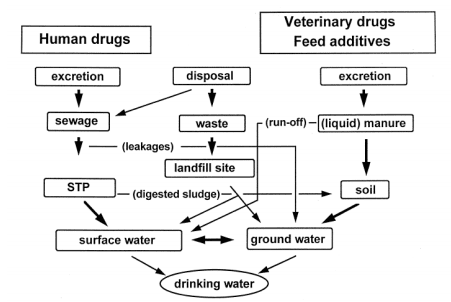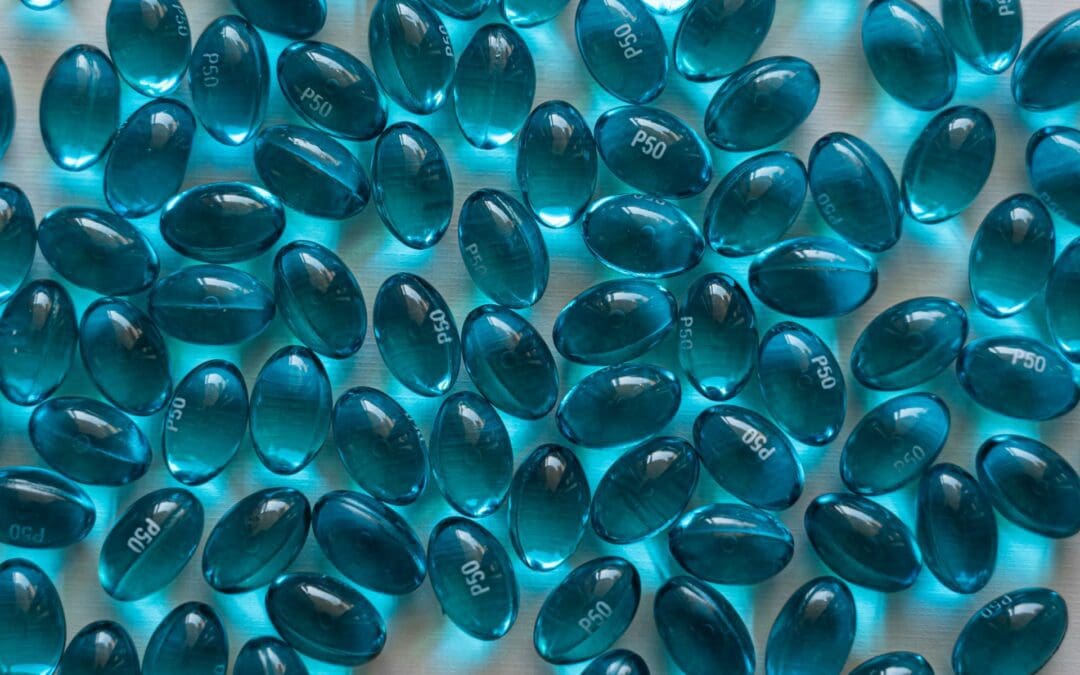In a recent study, pharmaceuticals including antibiotics, opiates, and hormones were found in 7% of aquifers used for public water supply. Yes, that means pharmaceuticals in tap water. Over-the-counter and prescription medications fall under the category of “contaminants of emerging concern,” meaning they are not officially tested for, so it’s hard to know how much of each is left in tap water after treatment. FreshPure Waters uses filtration technology proven to remove at least 99% of pharmaceuticals from our water.
Health Effects of Pharmaceuticals in Tap Water
The range of pharmaceuticals found in water is wide. Since pharmaceuticals and over the counter medications produce specific changes in the body, health effects vary from drug by drug. We don’t know precise effects yet. This is part of the paradox of public health- if there isn’t evidence to show something is dangerous to humans, there is no reason to regulate it. In fact, some sources say they are unlikely to cause harm to our health (Healthline). However, some researchers suggest that the potential biological effects of long-term, chronic exposure to a mixture of drugs a patient would not receive from a doctor otherwise is cause for concern.
“If the drinking water system is not efficiently removing those out and we have this persistent compound input to the natural water, there might be potential harm to humans,” Mou said. “Even at very low concentrations, they could still pose some serious problems.”
The Most Prominent Drugs Found in Tap Water:
- Aspirin
- Birth control hormones
- Blood thinners
- Cholesterol medication
- Anxiety and depression medications
- Caffeine
- Opiates
- Antibiotics (Port Clinton News Herald, Healthline)
Birth Control Pills
Birth control hormones act on the female reproductive system. Fish that have been swimming in lakes and rivers contaminated with hormones (estrogen and progesterone) cause reproductive mutations in fish. (WHO).
Antibiotics
Improper use of antibiotics is a cause of antibiotic resistant bacteria. When patients start to feel better halfway through a course of antibiotics, and don’t finish out the course, the bacteria that are left in your body have a chance to adapt. Small doses of antibiotics that don’t kill off the pathogenic bacteria completely give them a chance to evolve and become more resilient against antibiotics. While this doesn’t harm the individual, ingesting small amounts of antibiotics through water at low-levels in the long term, microorganisms may have the opportunity to evolve and become antibiotic resistant superbugs. (WHO).
Why are Pharmaceuticals in Tap Water ?
Pharmaceuticals inevitably end up in water, via elimination and improper disposal (usually down the toilet), as well as through a variety of other channels.

- Human & animal elimination
- Improper disposal
- Medical waste from health-care and veterinary clinics
- Runoff from conventional meat & dairy facilities (hormones & antibiotics) (WHO)
- Treated sewage sludge
- Industrial waste
- Leaching from Landfills (WHO)
*Best Practice for Pharmaceutical Disposal: Return what’s left to your pharmacy.
Contaminants of Emerging Concern
Pharmaceuticals are considered “contaminants of emerging concern.” A contaminant of emerging concern is any chemical that has been discovered in the environment that has not yet been studied, or the levels are considered insignificantly low.
This means they are not considered primary contaminants, which are regulated by the EPA’s National Primary Drinking Water Regulations (NPDWRs). NPDWRs are set under the Safe Drinking Water Act. The chemicals that do fall on this list are tested for regularly and must fall below the unique maximum contaminant levels set for each substance. “An MCL is the maximum allowable amount of a contaminant in drinking water which is delivered to the consumer.” (EPA).
In addition to the primary list, the EPA has a secondary list of 15 substances. These substances also have MCLs, but they are not regulated or enforced. In fact, public water utilities are not required to test for them at all- MCLs for secondary contaminants are suggestions. Pharmaceuticals are not on the list of secondary contaminants, so levels are not monitored unless research is proactively done on the local level.
Public Health


“Whether it’s asbestos or lead, it’s always full speed ahead with chemicals or products, even when we don’t know the full potential health consequences. Then later, when these health consequences become clearer, we wring our hands and say we really ought to do something about this.”
Dr. Ken Spaeth, chief of occupational and environmental medicine for Northwell Health Systems
How to Remove Pharmaceuticals from Water
Pharmaceuticals can be removed by several methods. Free chlorine, which is commonly used in public water treatment, removes about 50% of pharmaceuticals from water, and is especially effective at removing antibiotics.
The following methods removes 99% of pharmaceuticals:
- ozonation
- advanced oxidation
- granular activated carbon
- reverse osmosis (Science Daily)
Well water, however, causes more of a concern. “People who draw water from their own domestic wells are at a greater likelihood of exposure.” Make sure to have your wells tested for pharmaceuticals, especially if you live near agricultural sites or health facilities.
To find out if your local water contains pharmaceuticals, check the Environmental Working Group’s website.
FreshPure Removes Pharmaceuticals
FreshPure Waters removes up to 99.9% of potential contaminants found in tap water. This includes pharmaceuticals. Our filtration system utilizes granular activated coconut carbon and reverse osmosis. These two methods are used in all three types of water available at our dispensers.
